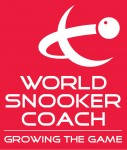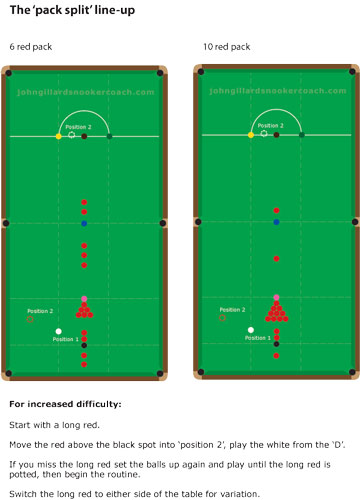Solo Practice
- By John Gillard
- 18 July, 2013
- No Comments
How much solo practice is best? A lot depends on how you enjoy playing the game and what your goals are. The ultimate aim must always be to have fun, so if you enjoy nothing other than the competitiveness of a game or a few frames and a laugh with your mate then that is great. There are times when solo practice does become very important and if you want to reach a high standard of play then solo practice will be essential.
If you are working on a technical change then solo practice is key. Here you can experiment without the pressure of a match and play pot after pot until the change has become instinctive. If you try to make changes and only play competitively, you may well struggle to get enough time at the table to embed the change, or become so focussed on the tactical side of the game you revert back to the bad habit which you are trying to overcome. Also, solo practice can be great for experimenting with different shots. You may struggle with a particular shot. Solo practice will allow you to repeat the shot, experimenting with different ways to play it, until you are confident and can add the shot to your game.
Even when you are happy with your game and confident in matchplay, some solo practice is still important to polish up your potting, positioning and rhythm around the table for matchplay situations. Beware too much solo practice at this stage, as it can be hard to adapt to matchplay when you are not used to sitting in your chair.
Keep solo practice varied. The classic line-up (with 15 reds lined up between black cushion and blue spot) is a good practice, particularly for embedding a technical change, but it’s important to mix up your practice with varying routines. The image below is one nice challenging alternative.
Applying pressure to practice
Avoid messy practice. When you are playing a set routine, if ever you miss, it is good practice to set the balls up from the beginning. You will get sick of doing it and not want to miss, adding an element of pressure to your practice. You will also avoid just swinging the cue at shots you wouldn’t go for in a game, which you will learn very little from. Set goals (eg I want to make 70 on this line-up), try to beat your best score. Again this will add some element of pressure.
Play a game against yourself (let’s use the classic line-up as an example again): set a target score of say 30. If you reach 30 you ‘win’ a frame. If you miss before reaching 30 you ‘lose’ a frame. If you miss or lose, start again from the beginning. Aim to beat yourself and win more than you lose. If you keep winning, then up the target. If you have evolved and progressed to the stage where your target is 100 and you are winning, then you will have become a very good player. Adding pressure to your practice will help you develop a ‘pressure-coping cue action’, essential for successful matchplay.
As a guide to how much solo practice is best I would say:
………………………………………Solo Competitive
Working on a technical change 90% 10% (unless unavoidable eg league games)
Beginner 75% 25%
Accomplished player 25% 75%
In the end it’s up to you: how you have fun with the game, and what you want to achieve with the game.


 Copyright © 2024
Copyright © 2024
Leave a Reply